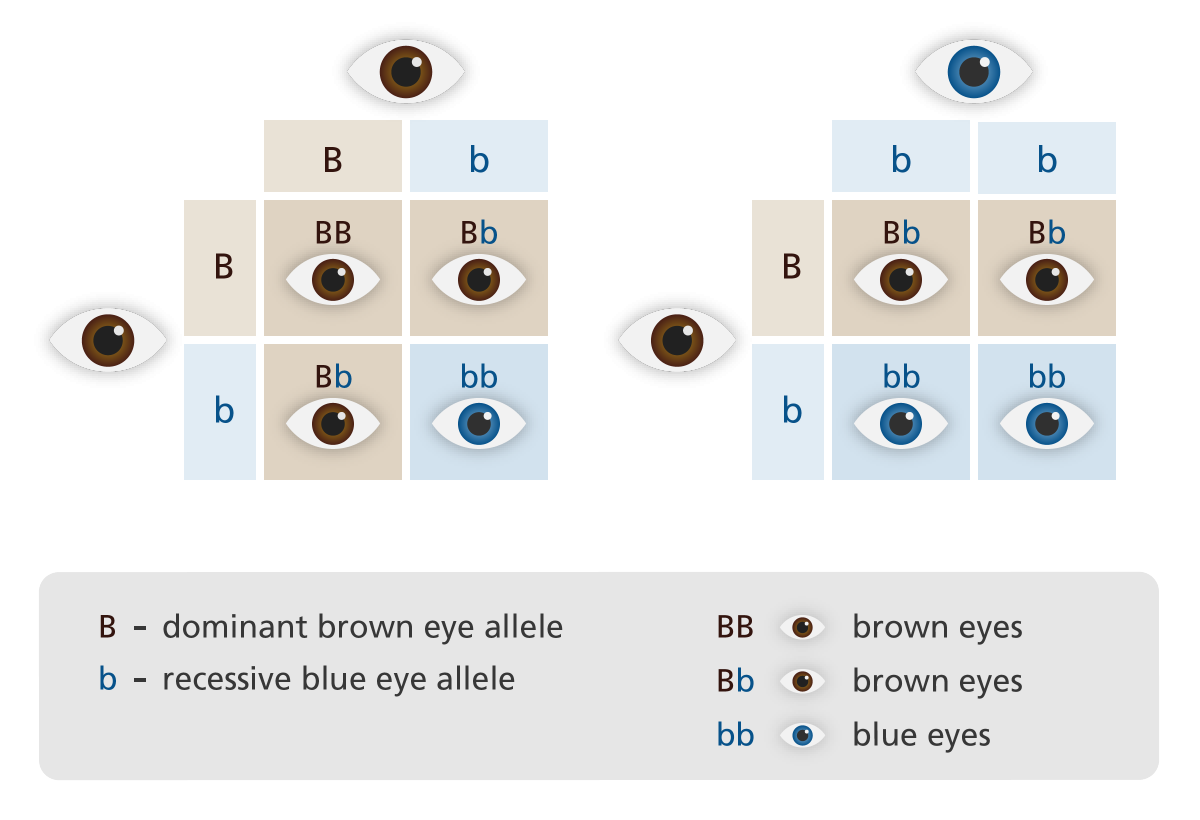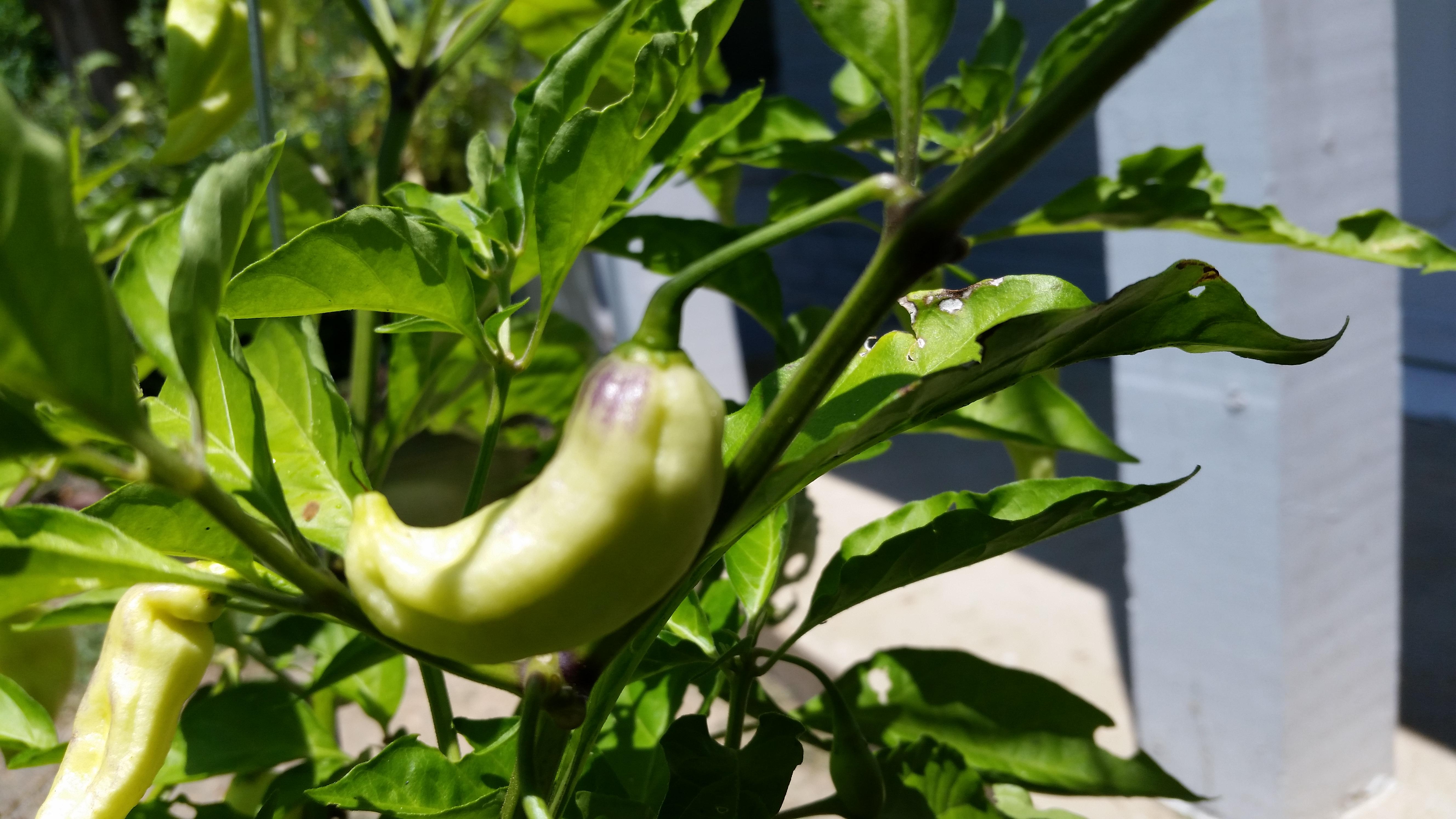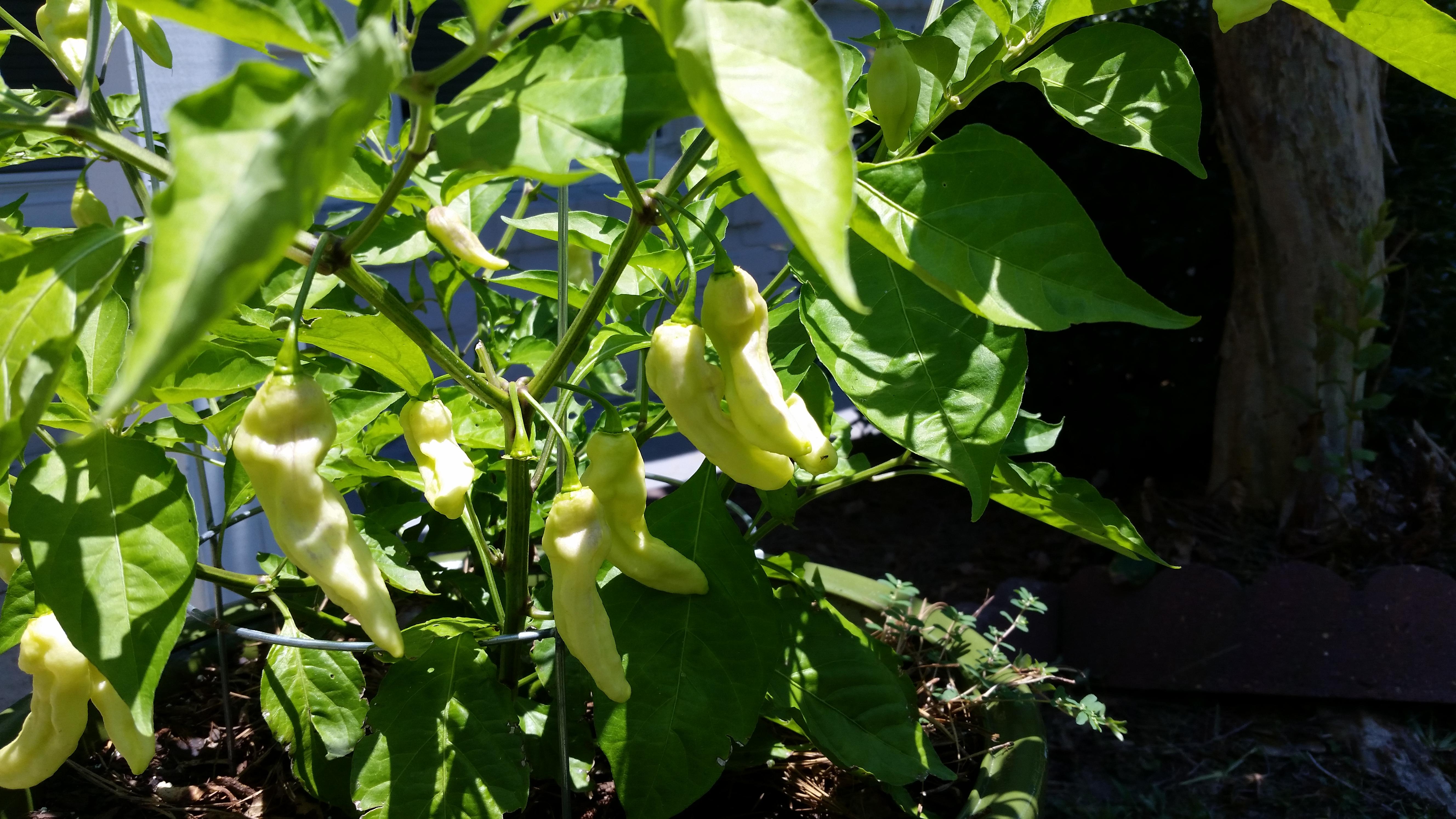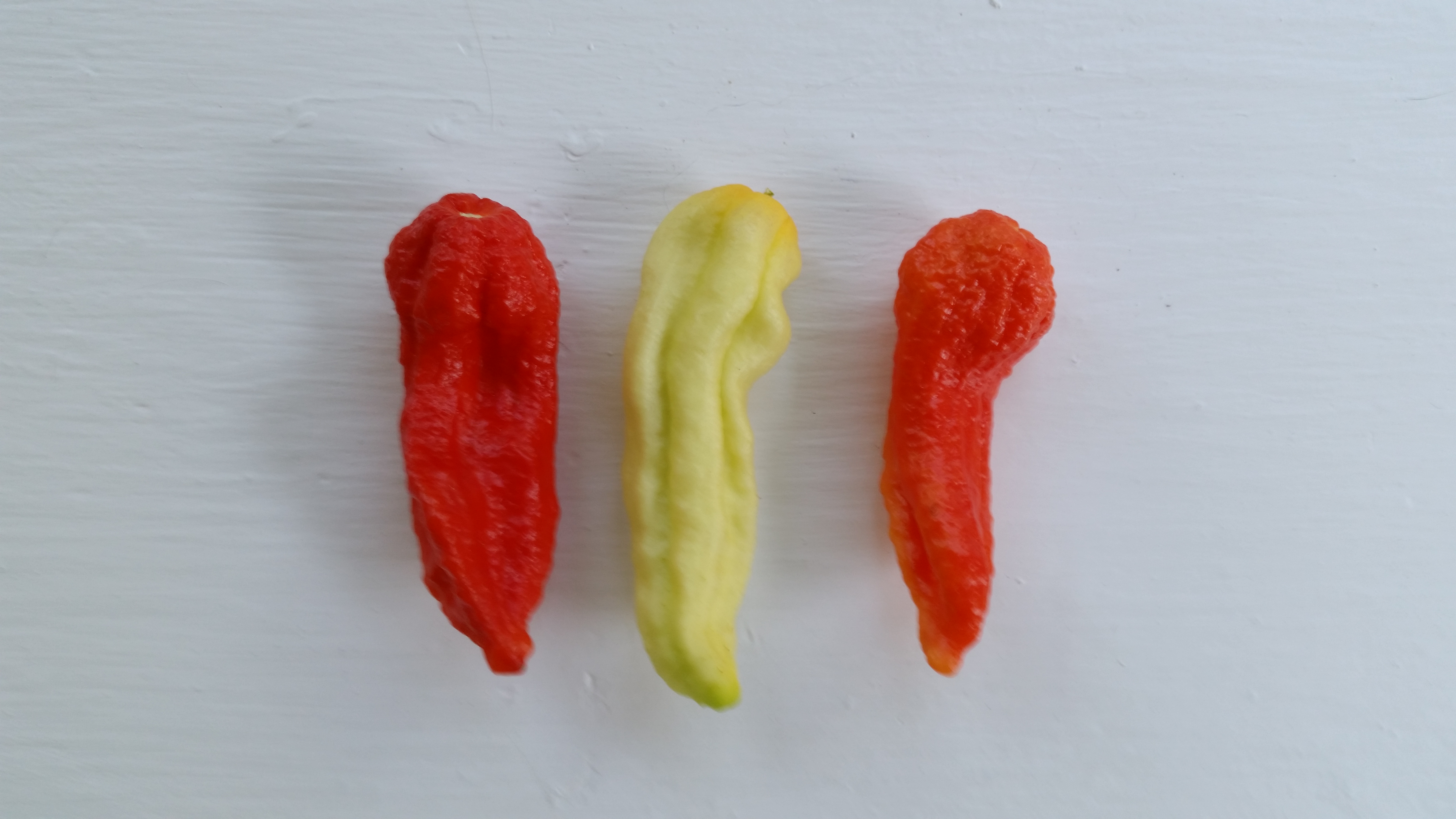Man this looks like a very rare case in which your peppers did not grow true to the original plant.
Honestly, this seems like you may have hit that one-in-a-million freak chance and that this plant is a "freak of nature" and has a recessive gene for a
WHITE phenotype. 

Save the seeds of this plant and grow them out again and see what happens. If this pepper was grown from the same seed pack, and you're sure that the seeds weren't mixed up somehow, I'd say you grew a pretty cool mutation. Sometimes the phenotype, or the appearance, of a white pepper can have a yellow-ish hue to them. The purple looks to be marks from the sun.
Another thing to think about is prolonged ripening, which can happen when the plant is undergoing too much stress. How much water is the plant receiving? How often? Has the plant been growing at all? Doing anything out of the ordinary?
The only true way to determine if the pods are ripe is if you cut the pod open and look at the development of the seeds. If the seeds are super soft, the pod is not ripe. Compare the taste of these pods to the other ripe ones.
Post pics! This is interesting

Below is an interesting chunk of information I found on dominant and recessive traits in genes. Just imagine that the comparison is with pepper color and not eye color.
What are dominant and recessive alleles?
Different versions of a gene are called alleles. Alleles are described as either dominant or recessive depending on their associated traits.
- Since human cells carry two copies of each chromosome[SIZE=14.4px]?[/SIZE] they have two versions of each gene[SIZE=14.4px]?[/SIZE]. These different versions of a gene are called alleles[SIZE=14.4px]?[/SIZE].
- Alleles can be either dominant[SIZE=14.4px]?[/SIZE] or recessive[SIZE=14.4px]?[/SIZE].
- Dominant alleles show their effect even if the individual only has one copy of the allele (also known as being heterozygous[SIZE=14.4px]?[/SIZE]). For example, the allele for brown eyes is dominant, therefore you only need one copy of the 'brown eye' allele to have brown eyes (although, with two copies you will still have brown eyes).
- If both alleles are dominant, it is called codominance[SIZE=14.4px]?[/SIZE]. The resulting characteristic is due to both alleles being expressed equally. An example of this is the blood group AB which is the result of codominance of the A and B dominant alleles.
- Recessive alleles only show their effect if the individual has two copies of the allele (also known as being homozygous[SIZE=14.4px]?[/SIZE]). For example, the allele for blue eyes is recessive, therefore to have blue eyes you need to have two copies of the 'blue eye' allele.

Illustration to show the inheritance of dominant and recessive alleles for eye colour.
Image credit: Genome Research Limited







